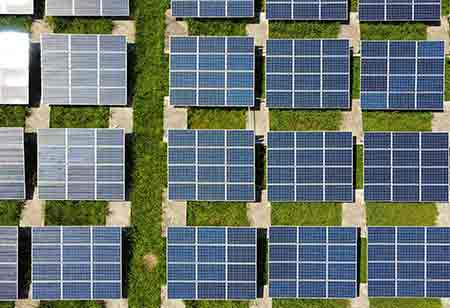THANK YOU FOR SUBSCRIBING
Be first to read the latest tech news, Industry Leader's Insights, and CIO interviews of medium and large enterprises exclusively from CFO Tech Outlook
THANK YOU FOR SUBSCRIBING

By
CFO Tech Outlook | Monday, November 17, 2025
Stay ahead of the industry with exclusive feature stories on the top companies, expert insights and the latest news delivered straight to your inbox. Subscribe today.
As ESG expectations tighten across Europe, finance leaders are being pushed to turn sustainability from an abstract goal into something measurable and strategic. Modern FP&A tools are becoming the bridge between moral intent and financial reality.
For years, finance teams have carried the responsibility of translating performance into numbers. But in 2025, those numbers mean more than profit or growth. Across Europe, performance now includes sustainability reports, environmental footprints and governance standards that demand the same accuracy once reserved for profit and loss statements.
Inside many finance departments, a quiet shift is unfolding. The rise of FP&A as a key force behind ESG accountability.
The Expanding Mandate of the CFO
Today’s European CFOs are being handed wider and heavier responsibilities. Forecasts still matter, but now they’re expected to give insight into both financial and non-financial value.
The problem is that most legacy systems were never meant to handle data like carbon emissions, workforce diversity or supplier ethics. ESG reporting speaks a different language, one focused on risk and impact over time rather than quarterly gain.
That’s why many finance leaders are leaning toward connected FP&A systems that treat sustainability metrics as part of the same process as financial planning. The same discipline used to predict revenue now helps track carbon budgets and test the financial cost of climate regulations before they hit.
Technology as the Translator Between Finance and ESG
One lesson has become clear through this transition: CFOs don’t just need data processing tools. No, they need tools that help them make sense of the story behind the numbers.
Modern FP&A systems are evolving into smart modeling platforms. Solutions such as Jedox FP&A Software help organizations pull operational, financial and sustainability data into one shared space. With this, companies can visualize how an environmental decision might echo through their profit line. Whether through carbon taxes, shifts in supply chains or investor confidence.
That kind of visibility is exactly what regulators and stakeholders are now demanding. It ensures that ESG goals are not handled in isolation, but woven into financial planning from the start. Done right, it turns compliance into genuine foresight.
Europe’s Regulatory Pressure Cooker
Europe continues to lead in sustainability regulation. With the Corporate Sustainability Reporting Directive (CSRD) now in effect, thousands of companies (many for the first time) are required to publish detailed ESG information this year.
This new reality is a wake-up call for finance teams. The old way of doing things, with spreadsheets and manual number-crunching, just doesn't work anymore. Regulators aren't just asking for reports. No, they want proof with numbers that are accurate, easy to compare, and traceable back to the source.
To keep up, companies are investing in stronger digital foundations to handle ESG analytics. FP&A technology sits at the center of that shift because it gives teams the structure to collect, test and link sustainability KPIs to financial outcomes in real time. It gives finance leaders the agility to react to new reporting demands without rebuilding systems every quarter.
From Compliance to Competitive Advantage
What was once seen as a compliance headache has turned into a competitive edge. Investors are no longer looking only at earnings. No, they’re judging companies by how well they measure and manage environmental risk.
FP&A platforms are uniquely placed to turn that awareness into measurable advantage. They allow CFOs to model how sustainability initiatives (like cleaner energy sourcing or circular production) lead to financial resilience over time. The ability to connect responsibility to profit reshapes how capital is allocated and how performance is defined.
As ESG data starts flowing naturally through planning cycles, finance teams begin to shift the conversation. It’s no longer just about what must be disclosed, but about what can be improved. The move from reactive compliance to proactive decision-making marks the difference between a company that follows and a company that leads.
Building Bridges Inside the Business
Every strong ESG strategy depends on collaboration, and FP&A has become the bridge between departments that once worked in silos.
So, by using shared models and connected tools, CFOs can align environmental goals with financial priorities so they reinforce each other instead of competing. That alignment builds trust, not only with internal teams but also with investors, regulators and the broader public.
Perhaps most importantly, this shift is changing the heart of company culture. The finance pros who were once celebrated as elite number crunchers are now learning to become interpreters of long-term value. The role of the CFO has exploded past traditional accounting. Today, they’re helping to write the actual definition of what true success looks like for the entire organization.
A Future Built on Integrated Intelligence
The next stage of FP&A will rely heavily on intelligent systems that blend ESG with predictive analytics. Artificial intelligence and scenario modeling will allow finance teams to forecast the financial outcomes of sustainability choices before they’re even made.
Imagine being able to model not just cash flow but carbon flow just to see how switching suppliers or investing in green technology changes profit trajectories. That’s where European finance is heading.
The organizations leading this change are those treating technology as both a strategic and ethical partner. When finance can track fiscal performance alongside social and environmental results, it doesn’t just record progress. It drives it.
I agree We use cookies on this website to enhance your user experience. By clicking any link on this page you are giving your consent for us to set cookies. More info



